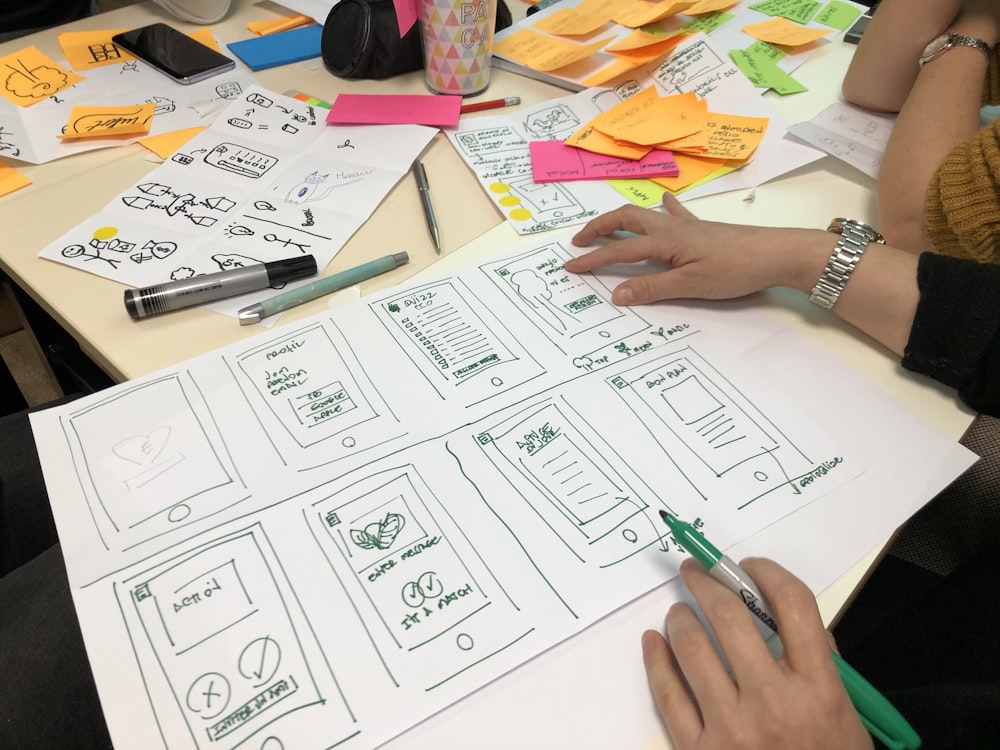
How to foster creativity in-house
One of the most common myths surrounding creativity is that it’s a skill you either possess or you don’t. However, when you strip it back, being creative is simply about having the ability to bring something valuable into the world.
Every person, every industry and every business has the ability to be creative, and if your job involves problem solving or innovating, the chances are you’re already harnessing huge amounts of creativity without even realising it.
The main problem with fostering creativity is finding the time to do it! We all lead busy lives and creativity often finds itself slipping down (or even falling off) the never ending to do list.
Finding ways to build creative thinking into your daily routine can bring huge benefits to your business, which is why we are sharing our thoughts on how to ensure creative thinking is at the forefront of your business. For a more detailed discussion listen to Episode 8 from Season 2 of our podcast, Revitalise & Grow, which is all about fostering creativity in-house.
You may also like to listen to this episode of the podcast, where we discuss whether working remotely has killed creativity.
Where to start:
As tempting as it is to jump straight into finding creative ideas and solutions, it is important to spend an appropriate amount of time sitting with the problem you’re trying to solve. Consider what the problem is, the impact it is currently having on your business and what you need the end result to be. It’s all too easy to get carried away with fun ideas, but don’t lose sight of the challenge you’re trying to solve.
Top tip: Do your research first. Read around the subject, keep abreast of the news and look at other companies, industries and campaigns for inspiration.
Utilise your existing resources:
Before you spend money bringing in the creative professionals, take a step back and think about how you can make better use of your existing team. Having the word ‘creative’ in a job title isn’t a pre-requisite to bringing thoughts and ideas to the table, and there’s no better place to start than with the people who are already invested in your company.
Top tip: It is essential to create a safe and supportive culture where all employees feel they have a voice and will be listened to. Ensure everyone is given a fair share of voice and remember that there is no such thing as a bad idea. The best ideas generally start as a seed and are grown by a whole team.
Creativity on demand:
Don’t expect your team to be able to come up with creative thoughts and ideas on demand. If you are planning on gathering your team for a creative brainstorm, provide plenty of notice by circulating a brief a few days in advance. This will allow individuals to find the time and space they need to develop their thoughts and ideas in the best way for them.
It’s not uncommon for people to have their best ideas when they’re doing something simple like driving, having a shower or taking a walk. This isn’t a coincidence! Simply stopping the external noise for a short time allows our minds to think more clearly, explore new ideas and become more curious, which is where the creative magic starts to happen.
Top tip: Always document a new idea as soon as it pops into your mind. Scribble it into a notebook or make a note on your phone. There’s nothing worse than having your ‘aha’ moment and then not being able to recall it further on down the line.
Holding a brainstorming session:
Try to get as much diversity within your team as possible and encourage people from a variety of different departments, levels and walks-of-life to contribute. It’s a known fact that diverse teams are smarter, more creative and better able to problem solve.
Try to ensure there is some structure to your brainstorm. Before you start, nominate a note taker to capture ideas, and a moderator to ensure discussions remain on track and that everyone has their turn to contribute. It can also be helpful to ask someone to play the role of Devil’s Advocate. It’s important for ideas to be challenged and viewed through a variety of different lenses.
Top tip: There are many different ways to hold an effective brainstorm and they don’t necessarily need to be conducted within the confines of an office. Think about the best approach for your business and listen to what your employees need in order to make valuable contributions to the brainstorm.
Timings:
Good ideas can take time and shouldn’t be rushed, but brainstorming until you’ve landed on the perfect idea can result in creativity being stifled. Always make sure that your brainstorm has a time limit placed upon it and don’t try to achieve everything in one session. Giving your people the time and space to develop ideas between brainstorming sessions can be highly effective.
Top tip: Try not to let your brainstorm go on for longer than an hour and consider running a series of shorter sessions if necessary.
Practice makes perfect:
If your company isn’t used to running creative brainstorms, then don’t expect them to run perfectly the first time you try. It can take time to build confidence within your team, so be patient and allow everyone to get used to the process. The more you practice the easier it will become!
Whether you consider yourself or your business to be ‘creative’, the key thing to remember is that if you cultivate the right environment for creative thought, and encourage people to bring ideas to the table without fear of judgement, you will be amazed at the problems you’ll be able to solve!
For a more detailed discussion on fostering creativity in-house, listen to Episode 8 from Season 2 of our podcast, Revitalise & Grow.






